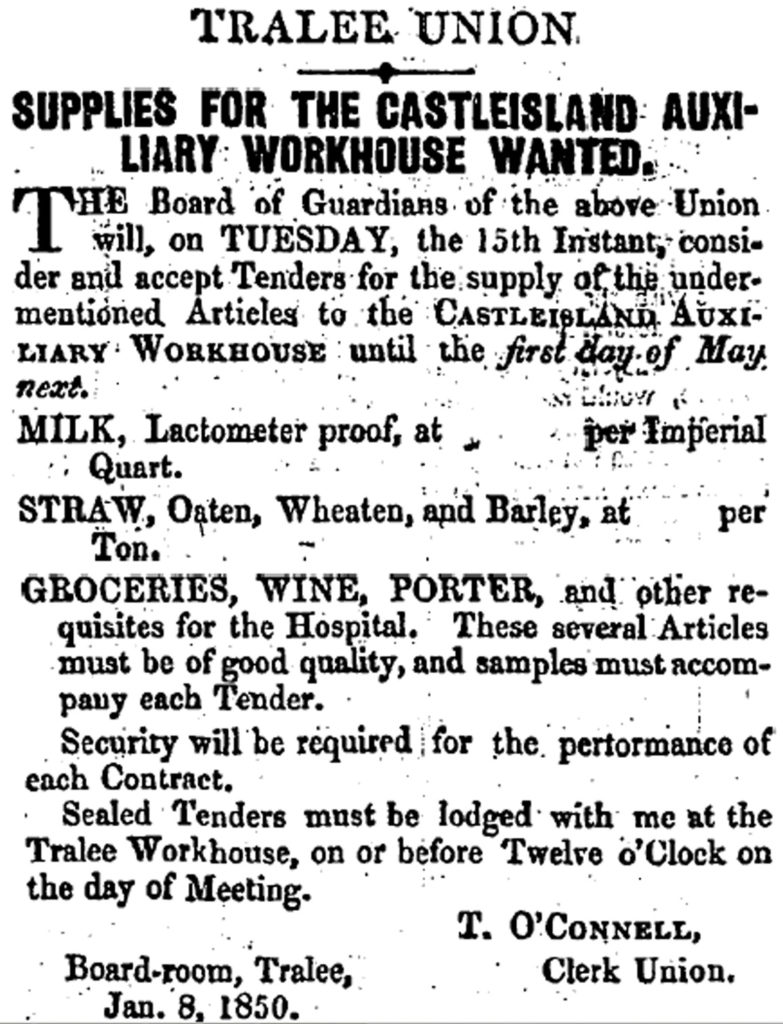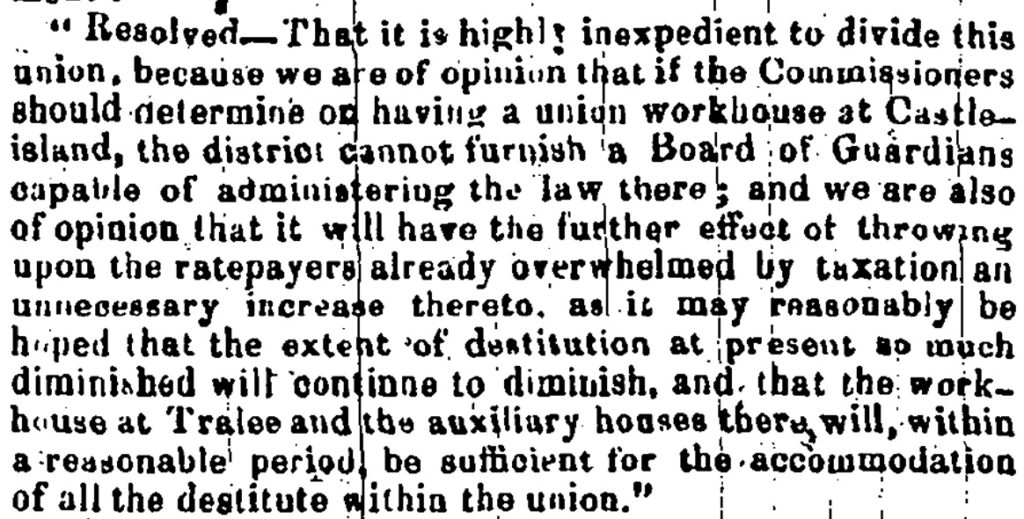Michael O’Donohoe’s research material relating to Castleisland Auxiliary Workhouse reveals he tried to source records of those who were confined to the institution during its brief existence in the post-famine period, 1849-1853.
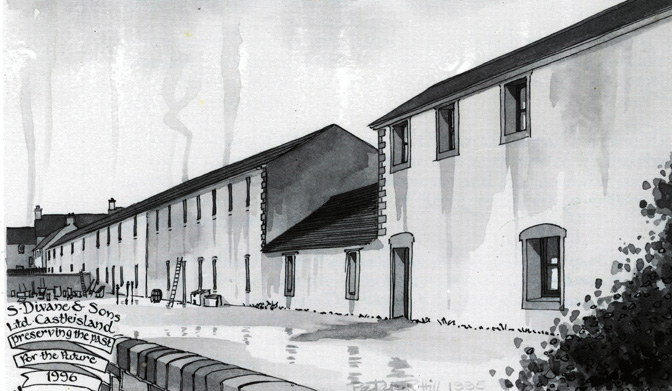
From Divanes Castleisland Calendar 1996
An idea of the appalling conditions in the country at this time can be discerned from Dr George Alfred Walker’s Lecture on Metropolitan Grave-yards (fourth lecture, 1848). He described Ireland’s graveyards as in ‘a most dangerous condition’. In Castleisland and Ballylongford, ‘troops of dogs prey from day to day on the bodies’:
Violent madness is the result which has led these rabid animals not only to attack one another but the cattle in the fields’.1
Establishment of Castleisland Workhouse
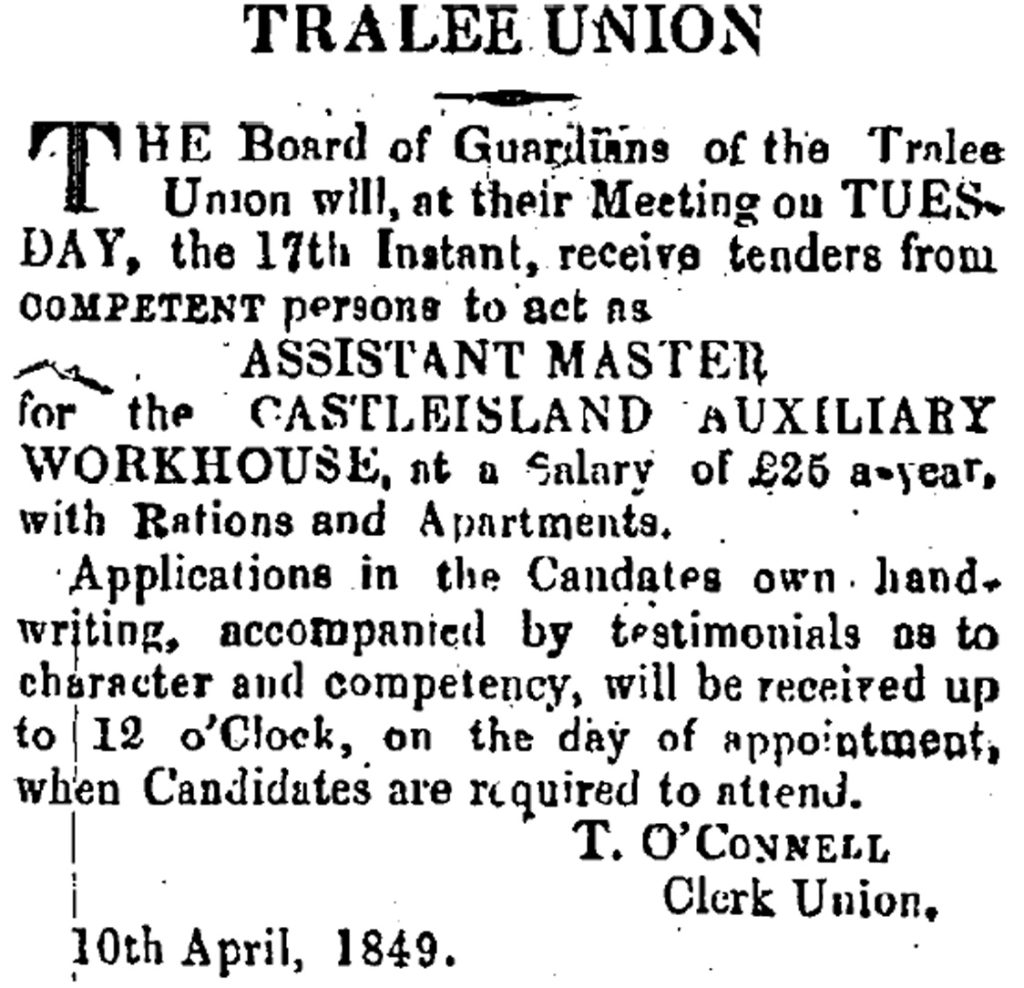
There appear to have been two buildings in Castleisland for the shelter of the poor: the workhouse and the fever hospital. Michael’s notes show they were located at Bawnluskaha and Tonbwee.2
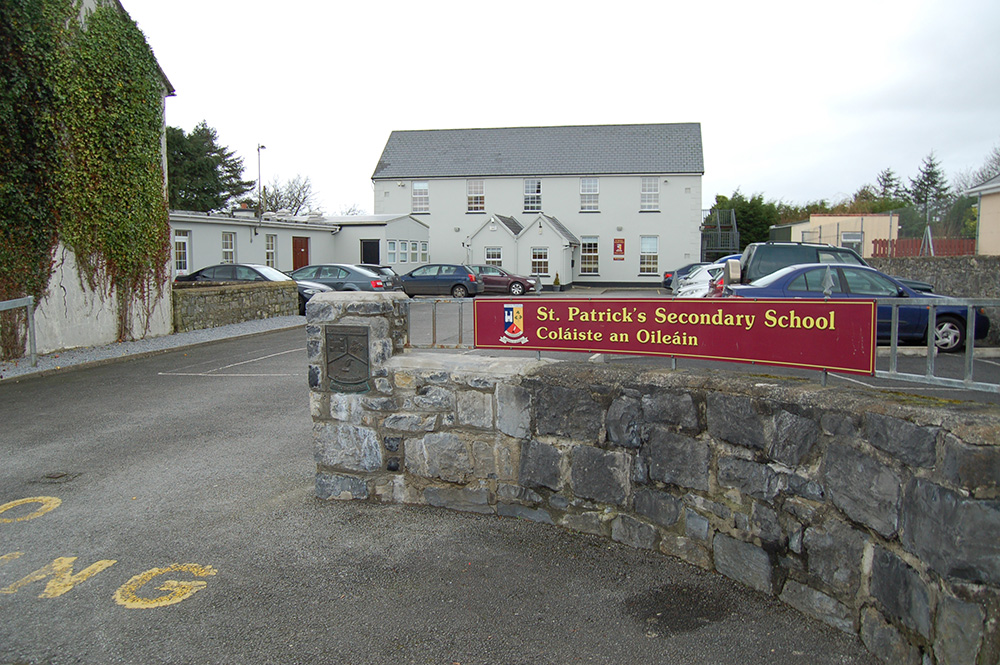
In 1850 it was proposed to divide the poor law union and build a permanent workhouse in Castleisland but objections meant this was never carried out.
Workhouse closed
It was resolved to close the workhouse in 1852.
At a meeting of the Tralee Board in 1854, it was observed that ‘the Board may now be said to have got rid of that very expensive establishment, the Castleisland auxiliary workhouse’.
‘Over six hundred paupers’
In 1866, accommodation was sought for militia staff in Castleisland and the former workhouse premises was suggested as a base. It was described thus:
These premises afforded sufficient accommodation for over six hundred paupers … there is ample yard space attached with pumps, and good drain to the river and if troops are an advantage to Tralee, why not also to Castleisland?
Silent history
Record of the Castleisland workhouse is scant but some stories and names come down to us. John Casey and Edward McSweeny were formerly Masters there and Dr Fitzmaurice, who resigned in September 1852, was Medical Attendant. His predecessors were Dr O’Ryan (who resigned in 1851) and Dr Blennerhassett (elected in January 1850, resigned September same year).3
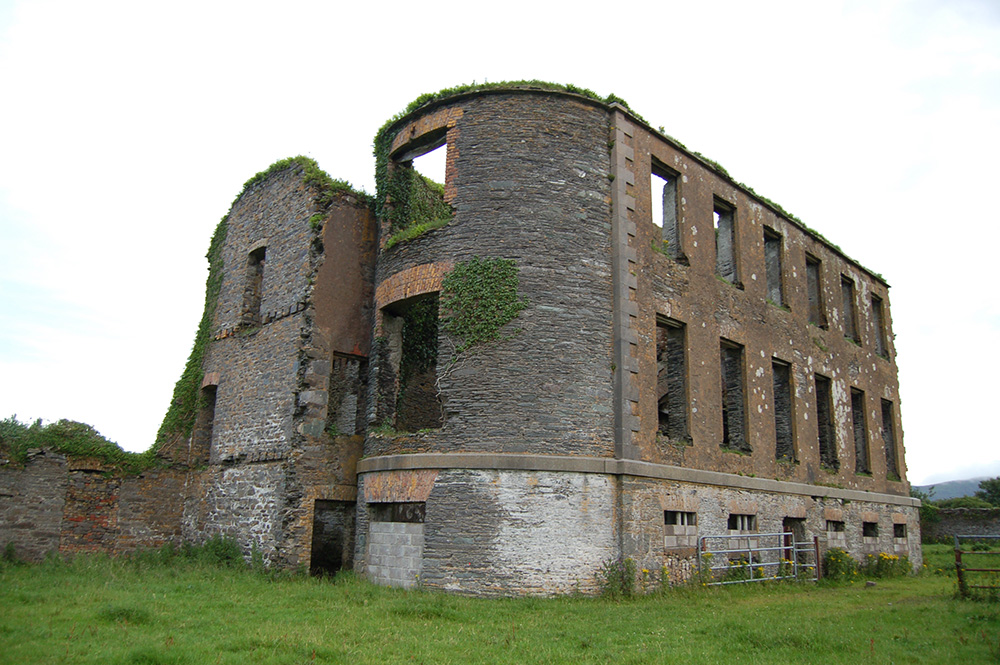
Those who died in the workhouse in tragic circumstances remain anonymous.
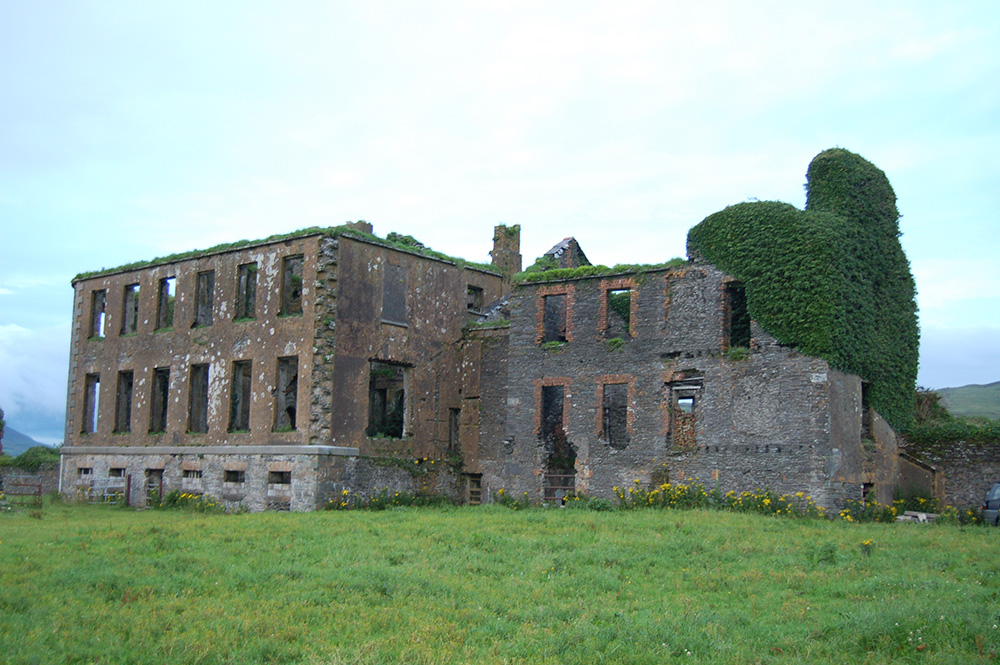
_______________________
1 George Alfred Walker (1807-1884). Lecture published in Belfast Newsletter, 18 January 1848. Dr Walker did not live to complete Grave Reminiscences, or Experiences of a Sanitary Reformer. 2 A report from the Tralee Union in 1850 stated 'the staff of one of the auxiliary workhouses in Castleisland (that which contained the fever hospital) was re-organised on a more economical footing'. A report two years later about closing the Castleisland workhouse stated, 'Mr Horsley the Inspector contended forcibly against retaining the fever hospital, the law too requiring that if the workhouse was closed the fever hospital should also be closed. He argued that there was no necessity for either and that great abuses had arisen connected with the maintenance of those establishments in Castleisland' (Kerry Examiner, 10 August 1852). 3 Poor Law Boards of Guardians Minute Books for all of the Kerry Unions are held in Kerry County Library.


